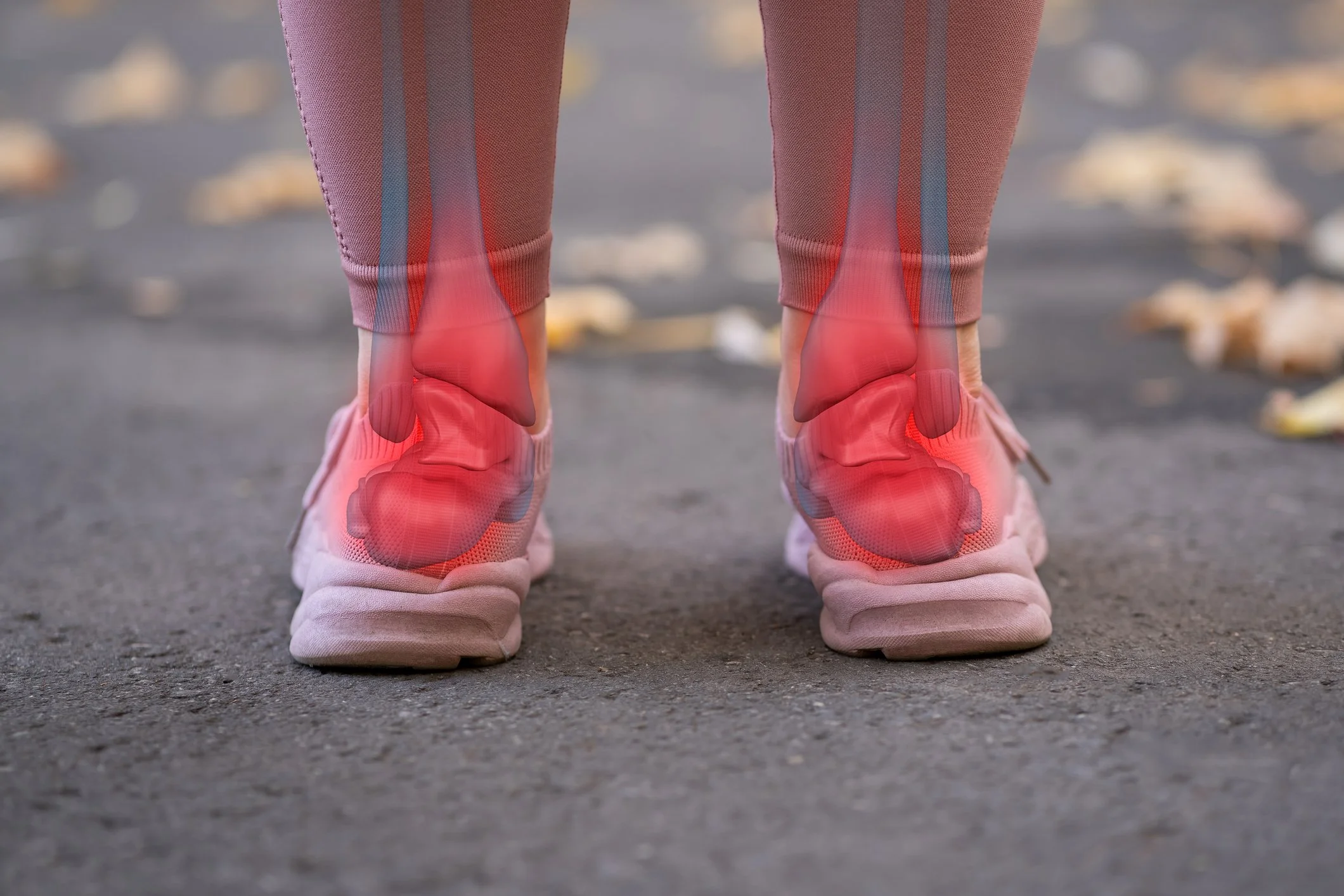ROOT CAUSES OF LOWER BODY BIOMECHANICAL ISSUES
If you’ve ever struggled with lingering pain in your feet, knees, hips, or lower back, there’s a strong chance that your biomechanics are at the root of the issue. Biomechanics refers to the way your body moves—how your bones, joints, and muscles work together each time you walk, run, or exercise. When everything is aligned correctly, movement feels natural and efficient. But when even slight imbalances occur, they can create a ripple effect that leads to discomfort and injury over time.
FOOT STRUCTURE AND ALIGNMENT
One of the most common contributors to biomechanical breakdown is foot structure and alignment. Because your feet form the foundation of your body, the way they’re shaped affects how forces travel upward through the legs and into the hips and spine. For example, flat feet tend to roll inward, which strains the knees and hips, while high arches fail to absorb shock effectively, sending more impact into the joints. Even something as subtle as a slight difference in leg length can cause the hips and spine to overcompensate, often leading to one-sided pain.
MUSCLE IMBALANCES
Muscle imbalances also play a significant role. When specific muscles are weak and others are overly tight, the body is forced to adapt in ways that disrupt normal movement. Weak glutes, for instance, can make it challenging to stabilize the hips and knees, often resulting in knee discomfort. Tight hip flexors can pull the pelvis forward, putting additional stress on the lower back, while tight calves restrict ankle motion, altering how the foot strikes the ground and transferring stress into the knees.
POSTURE AND MOVEMENT HABITS
Posture and everyday movement habits can contribute significantly to biomechanical stress on the body. The way you stand, sit, or move on a daily basis gradually affects your alignment. For instance, allowing your knees to collapse inward, walking with your feet turned out, or keeping an exaggerated arch in your lower back can put excessive strain on specific joints. Even minor, repetitive actions—such as consistently leaning to one side while standing or frequently crossing your legs—can create uneven stress throughout the body, potentially leading to pain over time.
OLD INJURIES
Old injuries leave lasting effects as well. A sprained ankle, for example, may heal, but it can reduce stability and balance, forcing the knees and hips to pick up the slack. Similarly, surgeries such as ACL or meniscus repair often weaken the surrounding muscles, changing how the joint moves. Over time, the body develops compensation patterns, where you unconsciously shift weight away from a vulnerable area. While protective at first, these adaptations often create new sources of strain.
FOOTWEAR CHOICES
Footwear choices can also make or break healthy biomechanics. Worn-out shoes or those lacking proper cushioning alter how the feet absorb impact. High heels, on the other hand, shorten the calf muscles and overload the forefoot, while overly stiff or unsupportive shoes prevent the feet from adapting naturally to the ground. The result is movement that feels less efficient, and places added stress on the body.
OVERUSE AND TRAINING MISTAKES
Training mistakes are another common culprit. Rapidly increasing mileage, weight, or intensity places more strain on the body than it can handle, especially if underlying imbalances already exist. Repetitive training—such as running only on hard pavement—magnifies minor issues, while inadequate rest leaves the body fatigued, increasing the risk of poor form and injury.
ANATOMY AND GENETICS
Lastly, anatomy and genetics shape the foundation of your biomechanics. Structural variations, such as knock knees, bowlegs, or differences in hip structure, naturally affect the way forces travel through the joints. While these features do not always cause problems, they can make an individual more prone to specific injuries if other biomechanical issues, such as weak muscles or poor posture, are also present.
The truth is that biomechanical issues rarely arise from a single cause. More often, they’re the result of several small factors—muscle weakness, poor footwear, past injuries, and daily habits—that accumulate over time. The encouraging news is that most problems can be corrected or improved with the right approach. A sports medicine podiatrist can perform a detailed biomechanical evaluation to identify the source of the problem and design a personalized plan. This may include orthotics, footwear recommendations, targeted strength and flexibility exercises, or adjustments to training routines.
When your biomechanics are balanced, your movements become more efficient, your risk of injury decreases, and you’ll feel stronger and more comfortable in the activities you enjoy most.
If you or someone that you care for suffers from pain in the feet, ankles, knees, hips, and/or lower back, the pain may be due to misalignment caused by faulty biomechanics, which can be treated and corrected with the help of custom orthotic insoles.
To schedule your comprehensive biomechanical evaluation, visit drleecohen.com or call our Sports Medicine Podiatry Center and book an appointment at our Marlton, N.J. Sports Medicine Facility or Ridley Park, P.A. Office location with one of our podiatric sports medicine specialists today by calling (610) 522-9200.



